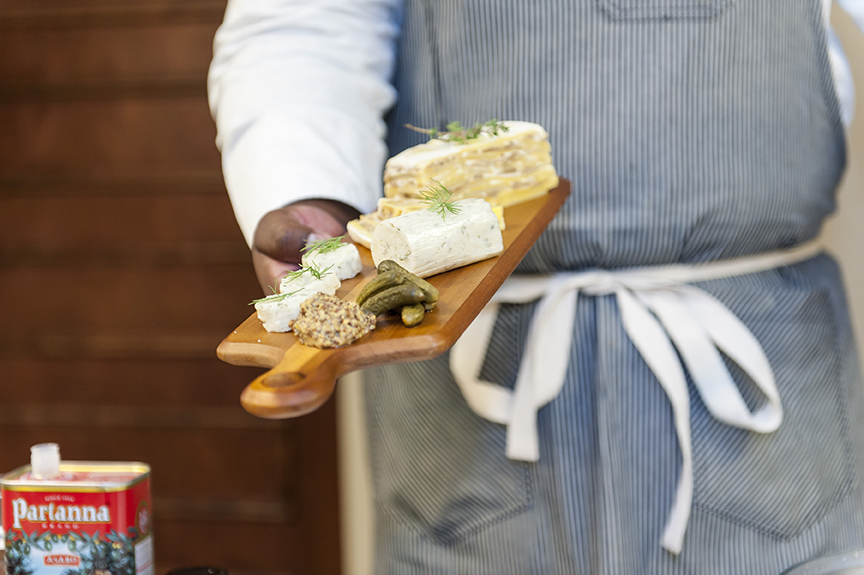Editor's note: Over the next few days, enjoy an 8-part series on disruptions that may affect your business in 2018 and beyond. They are:
Part 1: Natural Disasters and Disaster Relief
Part 2: Ownership & Planning for the Next Generation
Part 6: Sustainability & Food Waste Concerns
Part 7: Commodity vs Expertise
---
Food trends for 2018
Vegetables, plant-based products and ethnic mash-ups ruled 2017
Duly noted: place the word “guacamole” into your dating profile and you will see an increase in inbound messages, says online dating service Zoosk, of close to 145%. But fried chicken and/or yams—not so much. Although sales of avocados showed a slight decrease in personal purchases per person in 2017 (from a high in 2016 of 119 to 113 avocados in 2017, according to Haas Avocado Board), perhaps it’s because consumers, particularly those health-conscious types, are buying them in droves in restaurants in the form of avocado toast, avocado slathered on sandwiches, avocado hummus, smoothies…and (as mentioned) that “swipe right” word of the moment, guacamole. “Avocados are a nutrient-dense, cholesterol-free fruit with naturally good fats,” said Gina Widjaja, Director of Marketing & Communications, Haas Avocado Board, “and reinforce the role avocados play in everyday healthy living even while dining out.”
Menu trend: The vegetable centric menu is certainly on the rise, says Gerry Ludwig, CEC, Gordon Food Service (and speaker at Catersource 2018), but with a caveat: it’s a menu in which plants and protein collide, resulting in dishes that are not meatless and are specifically targeted by omnivorous dining consumers who increasingly seek boldly flavored vegetable offerings in foodservice.

Gerry Ludwig, CEC, Gordon Food Service will present "Flavor Trends from Coast to Coast" at Catersource 2018. Ludwig has been visiting newly opened restaurants in some of the biggest US cities for over 15 years and can chart the rise and fall of food trends. Join him on Monday, February 19 when he discusses food trends that will affect your bottom line for the better—should you choose to embrace them! Click here for a description of his session.
As Eater-LA’s Farley Elliott noted in a late 2016 piece for a review of the new Los Angeles-based restaurant, P.Y.T., “you won’t really find animal proteins center stage here. Instead, they’ll be singing in the chorus.” That song has become a Top 40 hit across many of the larger dining regions across the U.S. with protein “adds” including garnishes and understated hits of pancetta, prosciutto, and Iberico, meat broths, uni, roe, and anchovies. Vegetables are no longer relegated to being sides, but instead are sections within a menu. Consumers are ready for this trend, says Ludwig, and the ‘meatless mindset’ is dissipating rapidly.
---
Joanne Purnell & Jennie Cook with teach, "Your Clients Will Want to Eat Your Veggies" at the Art of Catering Food in Las Vegas. Click here for a session decription.
---
Menu trend: “Don’t call it ‘stealth health’” says Tara Fitzpatrick, senior editor, Food Management magazine. “This is the era of loud and proud plant-based dishes: cauliflower steak, chickpea sloppy joes, and the mushroom Philly sandwich.” It’s debatable, says Fitzgerald, that “anything meat can do, veggies can do better,” but product innovations have certainly made vegetarian and vegan items much more hearty and satisfying. Indeed, Whole Foods pointed to anticipated 2018 trend, ‘High-Tech Goes Plant-Forward,’ saying “By using science to advance recipes and manipulate plant-based ingredients and proteins, these techniques are creating mind-bending alternatives like ‘bleeding’ vegan burgers or sushi-grade ‘not-tuna’ made from tomatoes. These new production techniques are also bringing some new varieties of nut milks and yogurts made from pili nuts, peas, bananas, macadamia nuts, and pecans. Dairy-free indulgences like vegan frosting, brownies, ice cream, brioche and crème brûlée are getting so delicious, non-vegans won’t know the difference—or they might choose them anyway!”

Vegetable charcuterie, in the form of various presentations of potatoes, was seen at the INternational Foodservice Editorial Council summit in Boulder, CO in October 2017. Photo courtesy Richard Jennings Photography
Jackfruit, named by Catersource as one of the breakout ingredients of 2017, shreds like pulled pork and embraces the flavor of the sauces, marinades, and spices it accompanies. We first saw jackfruit as a convenient and cost effective catering option at Art of Catering Food in Salt Lake City, UT in 2015 and have been tracking its rise since.

Jackfruit was recently exhibited at the NRA show in May, and sampled as a pulled ‘pork’ slider. Photo Kathleen Stoehr
But it isn’t just jackfruit making an impact: according to the Plant Based Foods Association, tofu, tempeh, meat, milk, and butter alternatives, plus frozen desserts, and more will top 3.1 billion in sales.
Additional trends: Chef Ludwig speaks to the “rising trend of Indian and Middle Eastern chefs that are intentionally blending the classic ingredients and flavors of their cuisines into a wide array of global dishes, creating ‘mashed-up’ variations that appeal to a large number of dining consumers and bring these flavors closer to the mainstream.”
Popular Israeli condiment, s’chug (a spicy green chili/cilantro/parsley sauce) may be the break out ingredient of 2018, according to Peggy Castaldi of Supherb Farms; sorghum (shown last year in Catersource magazine as a break out ingredient) is taking over quinoa as the “It” grain; Executive chef Robin Selden, Marcia Selden Catering, pointed to the rise of dips (in conjunction with crudité) with its accompanying hashtag #allaboutthedip, in a recent article for Forbes; and look to the rise of florals as garnish, infusion, and (of course) stirred or shaken into cocktails. St. Germain elderflower liqueur, for example, is widely considered to be the “bartender’s catsup,” so beloved for its ability to elevate any cocktail, no matter how middling it might be, to greater heights due to its delicate, well-balanced flavor.

The Herbal Chef, Chris Sayegh, will take the stage on Tuesday morning at Caesars Palace to discuss the rise of Cannabis in our culture and will also demo THC extraction. Click here for a full description of his session.
Finally, watch for the rise of THC-infused beverages and cuisine, as marijuana laws continue to change in states across the U.S.
Cheers to disruption—may it ever be a game changer for our industry!



